September 8, 2017 Auroras
Coleraine, Minnesota
An X9.3 solar flare, the largest measured during solar cycle 24, blasted a coronal mass ejection as Earth, and it hit late the following day, about two hours before sunset. Bz immediately dropped to as low as -33 nT, making me really anxious to get out and shoot as soon after sunset as possible. If Bz stayed that far south for a couple hours or more, auroras would fill the sky.
As it turned out, Bz went north about 30 minutes after sunset, but the time of southward Bz was indeed enough to bring them to my latitude. The best part of the show actually happened barely before dark, as evidenced by a number of spectacular photographs taken from the Upper Peninsula of Michigan. Multi-colored coronas were in some of those shots. I could faintly make one out overhead as I started shooting, but it was really difficult to see.
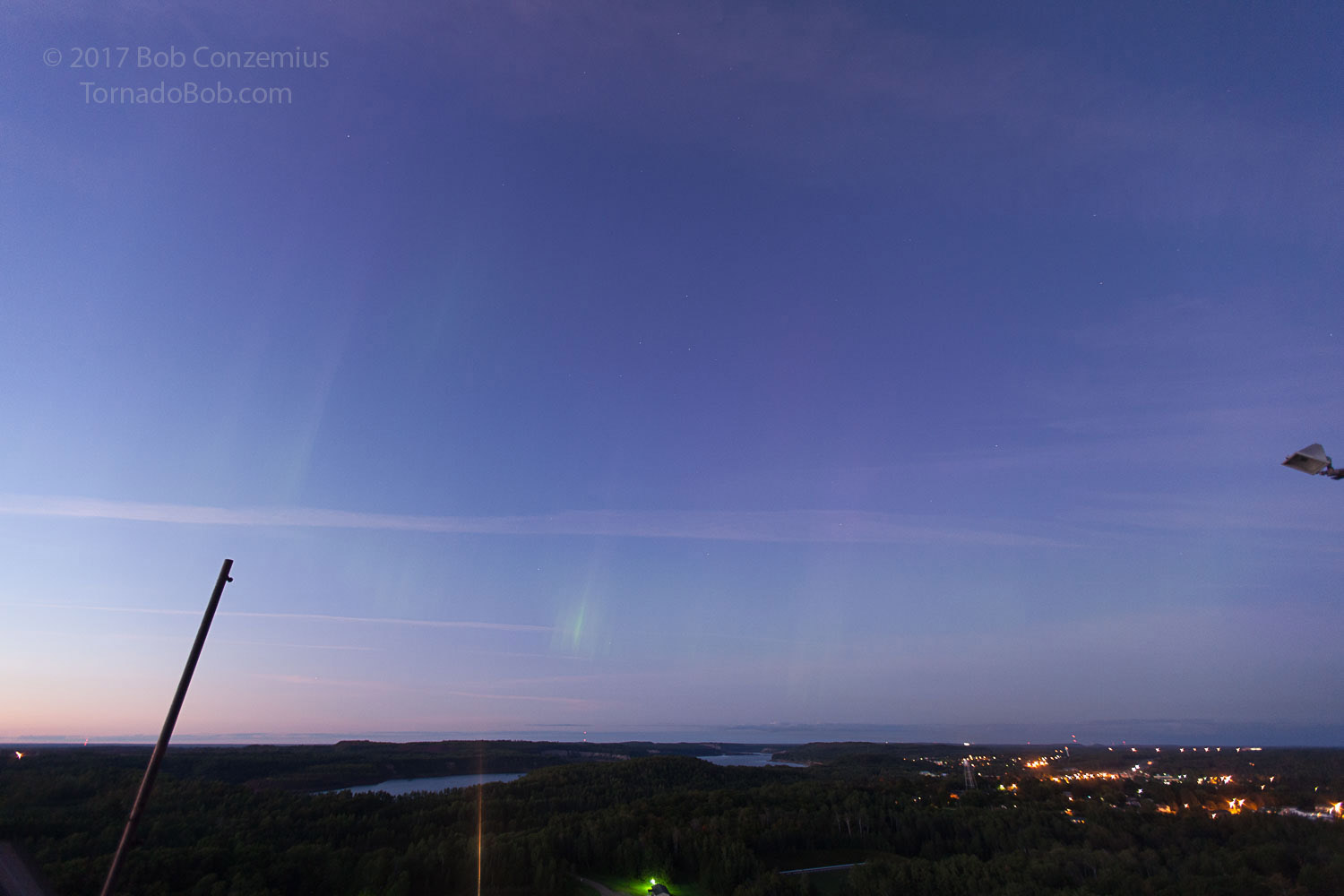 |
| The first substorm at 8:24 occurred a bit too early to get any high contrast shots. |
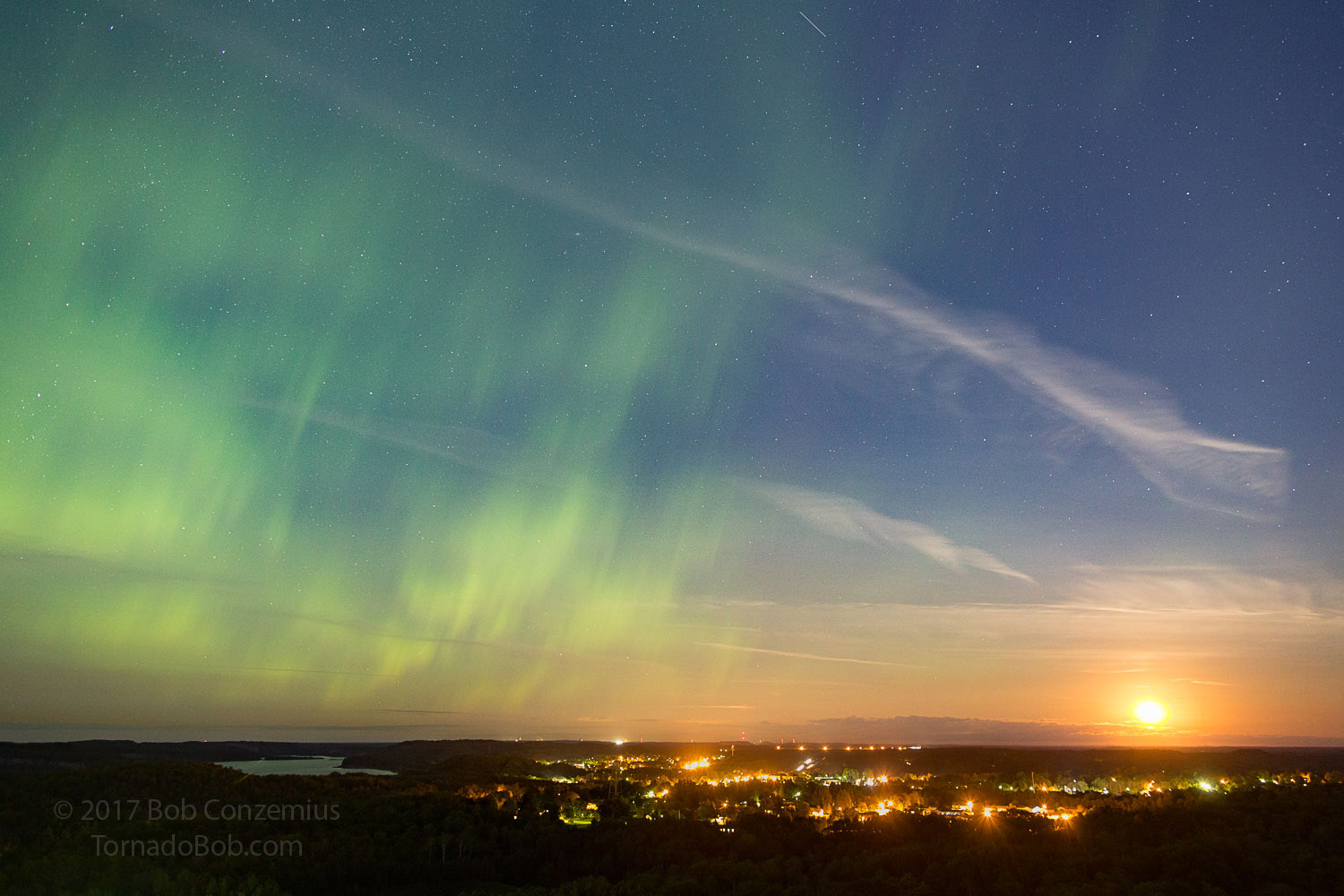 |
| Soon, the moon was rising (8:53 PM). |
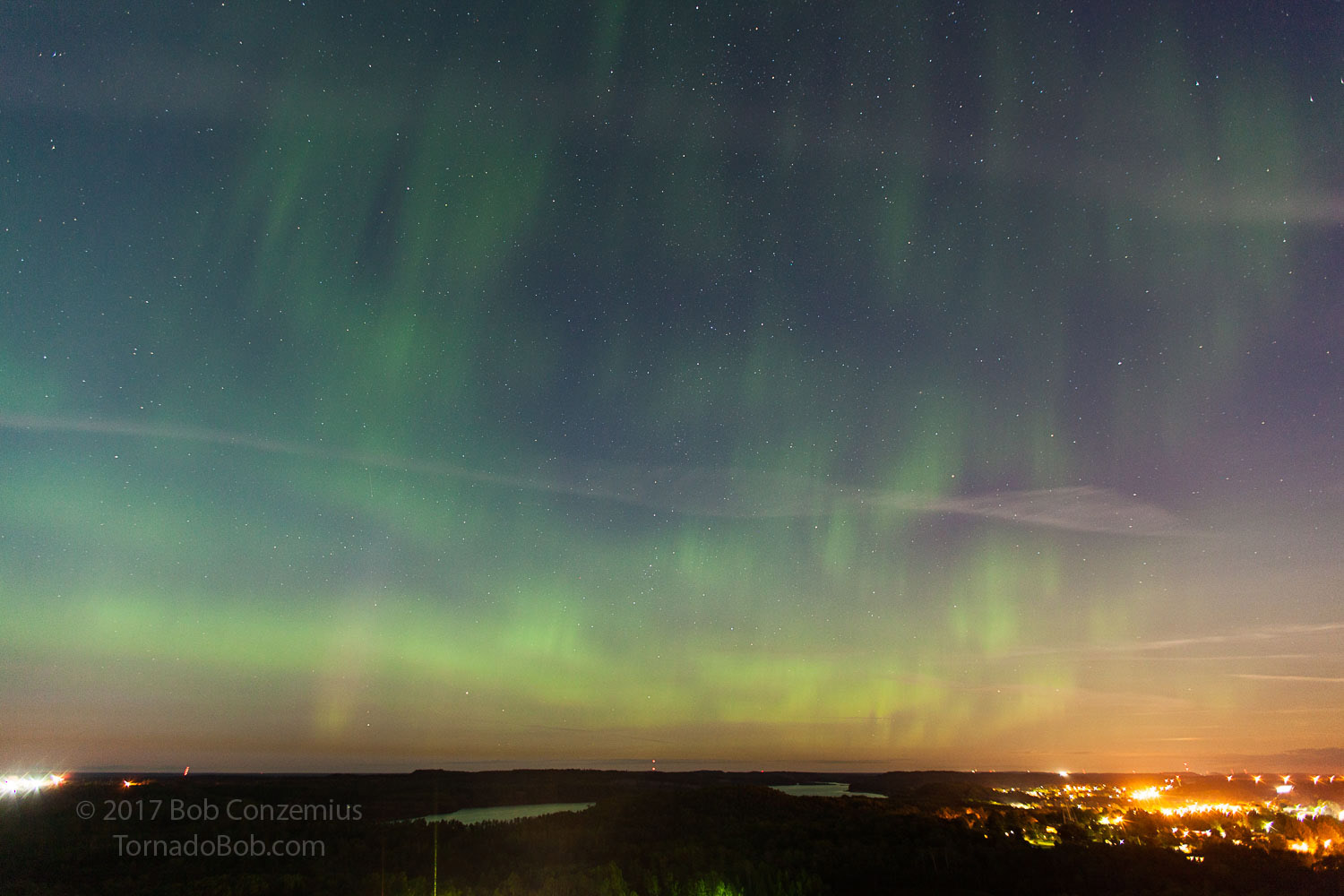 |
| Auroras filled the northern sky at 8:57. |
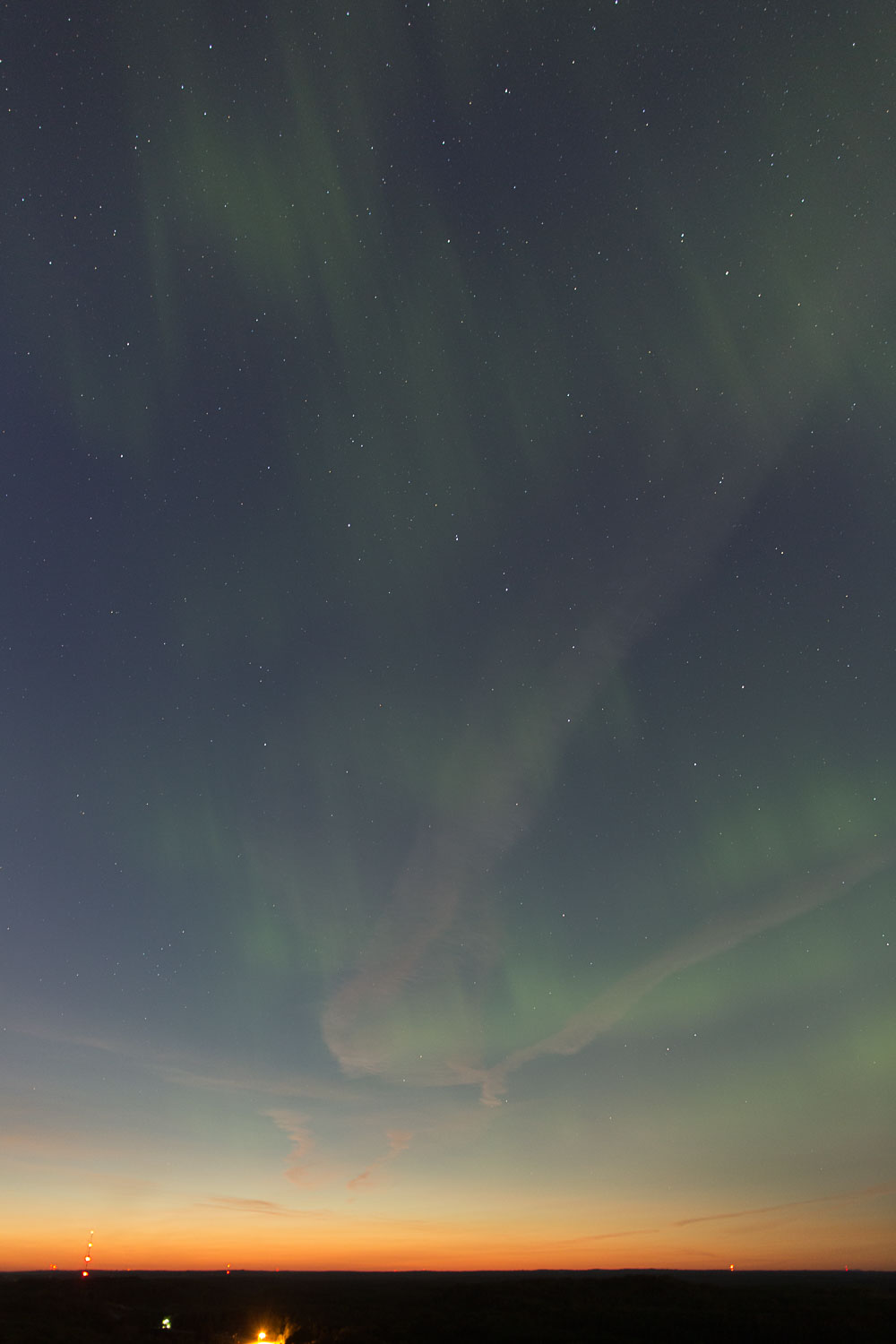 |
| At 9:16 PM, 52 minutes after I first spotted the auroras, twilight was still fading to the west. |
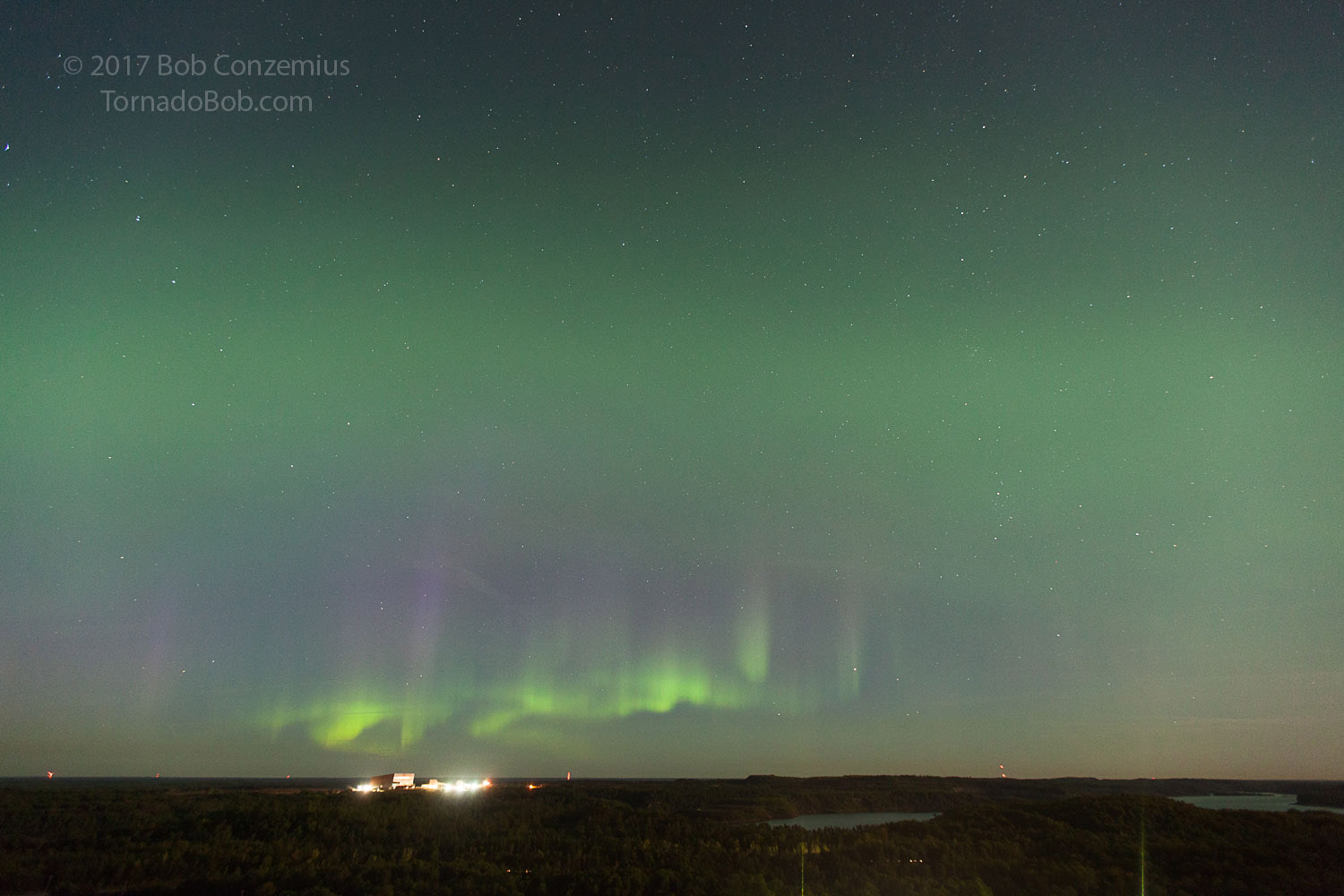 |
| 9:37 PM: the sky overhead turned a flat green while the bright, dancing auroras were to the north. |
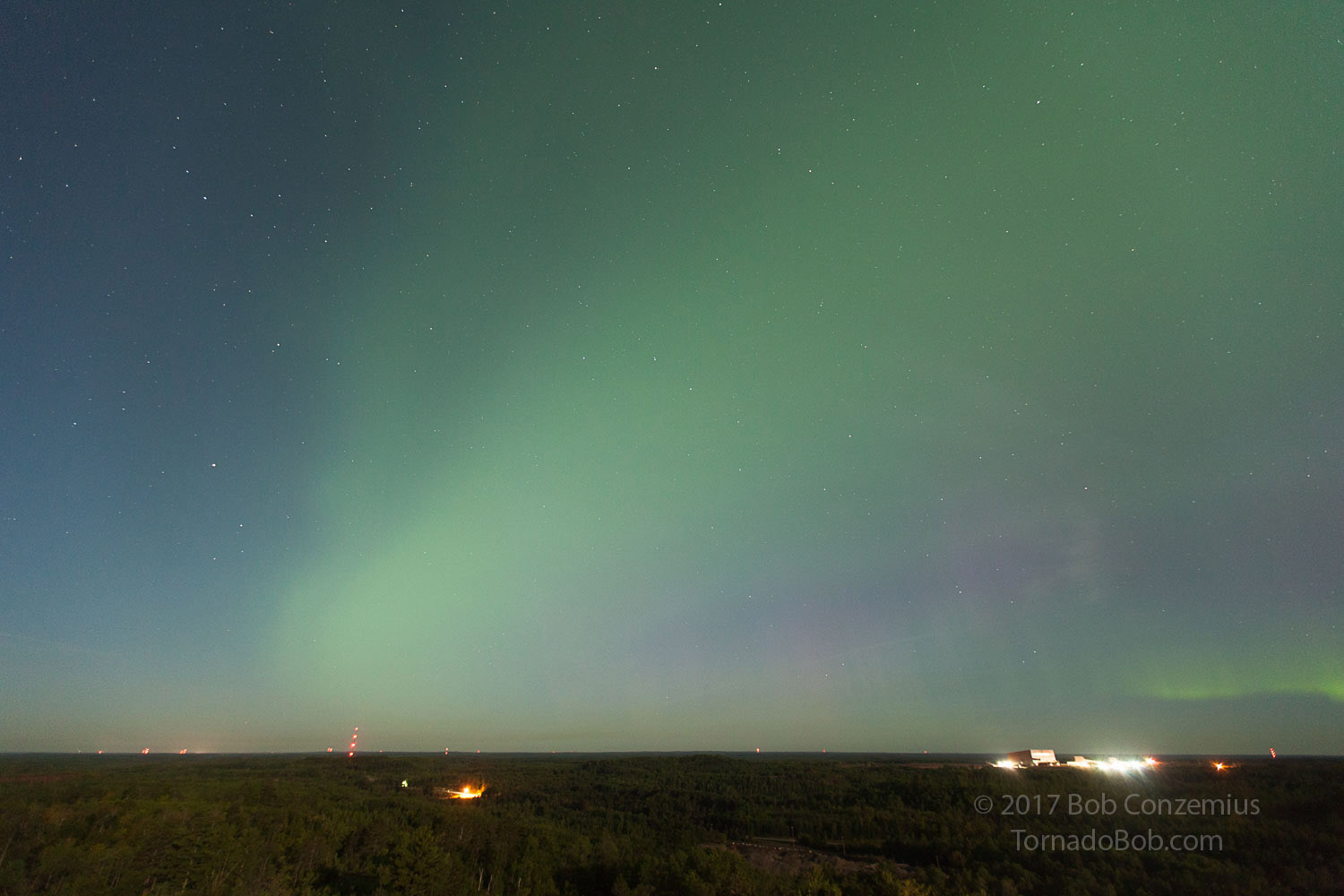 |
| At 9:46, a look down the diffuse green band to the northwest. |
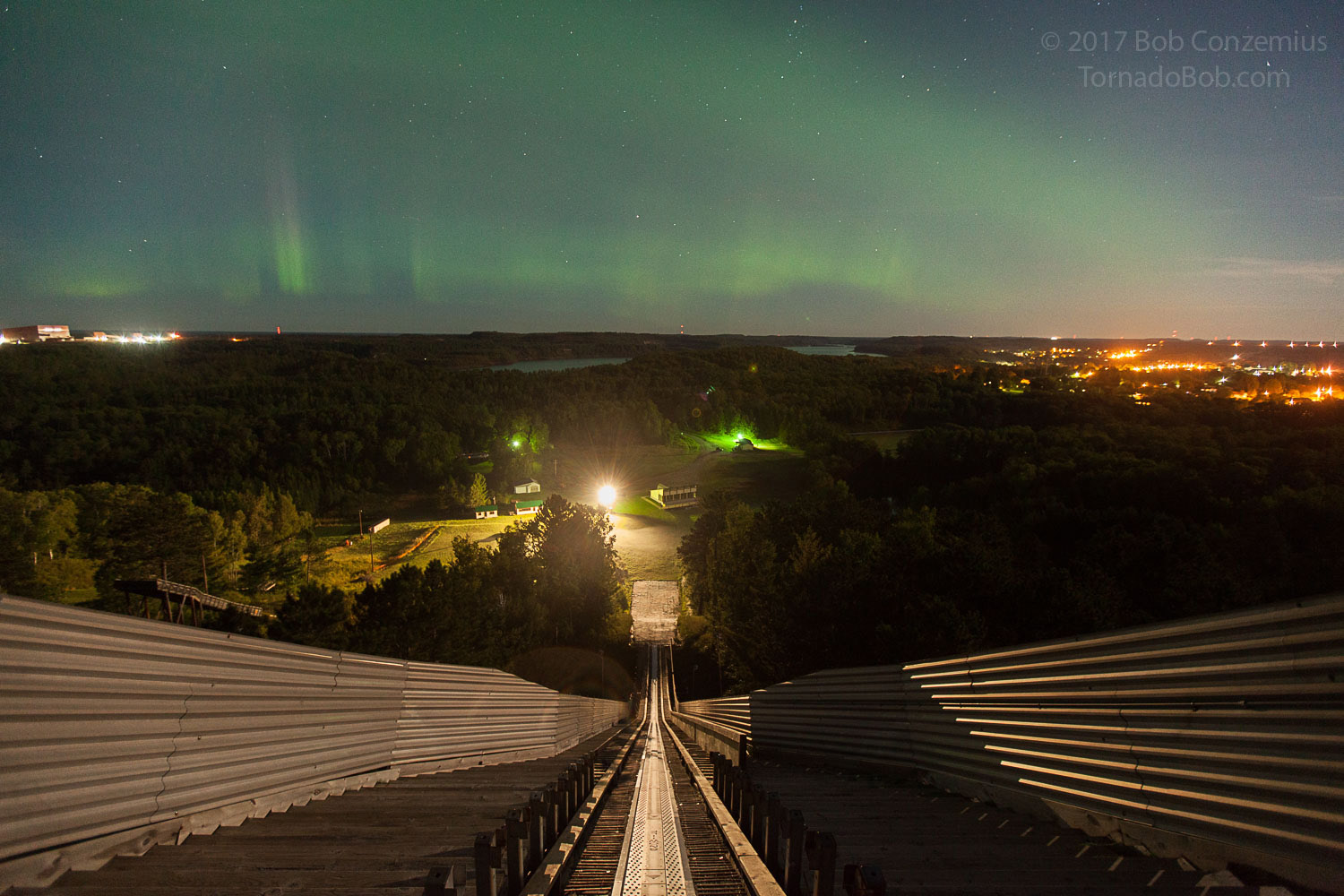 |
| At 10:10 PM. |
 |
| A second substorm begins at 11;37 PM. |
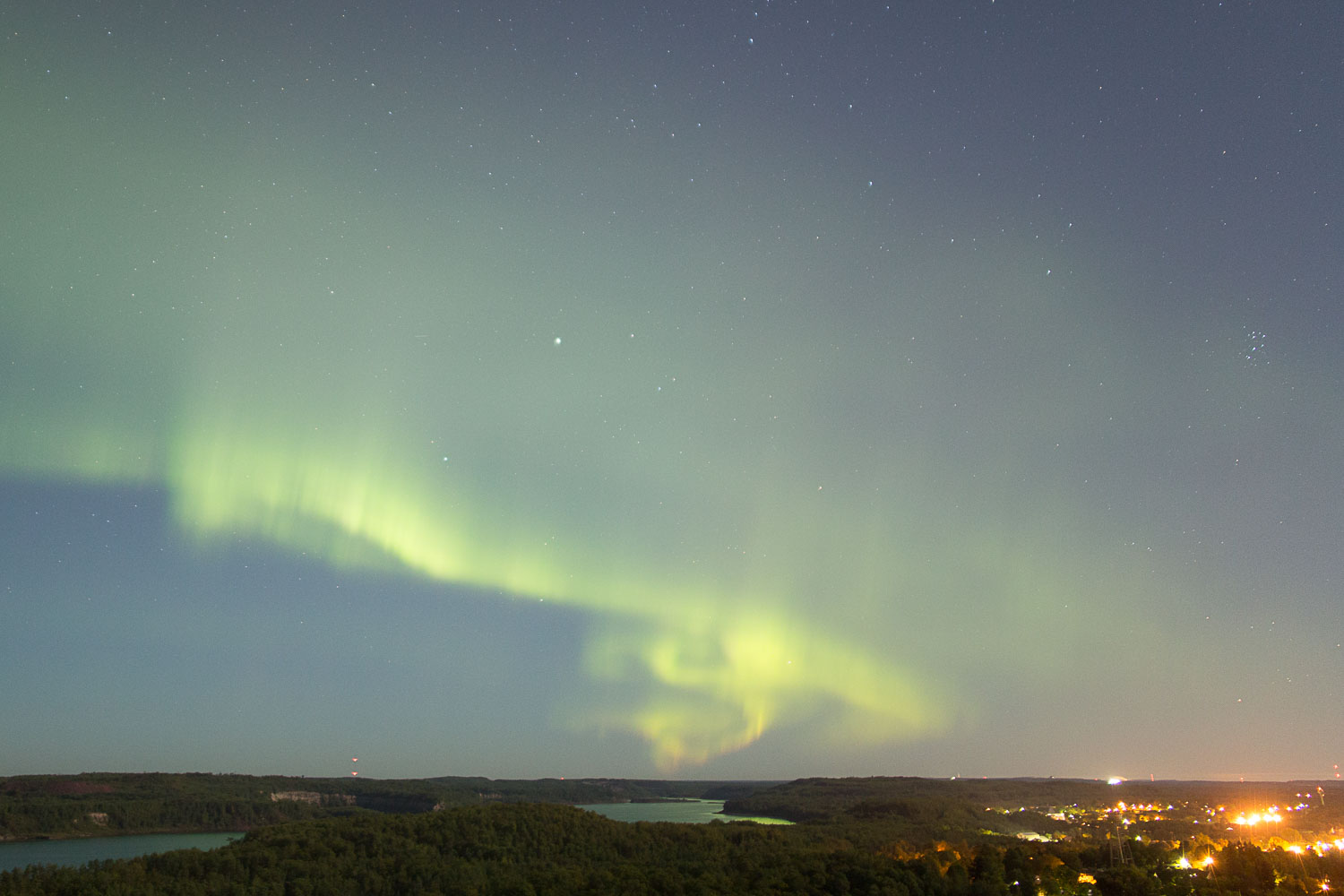 |
| Cropped picture to show the structure over the mine pits at 11:42. |
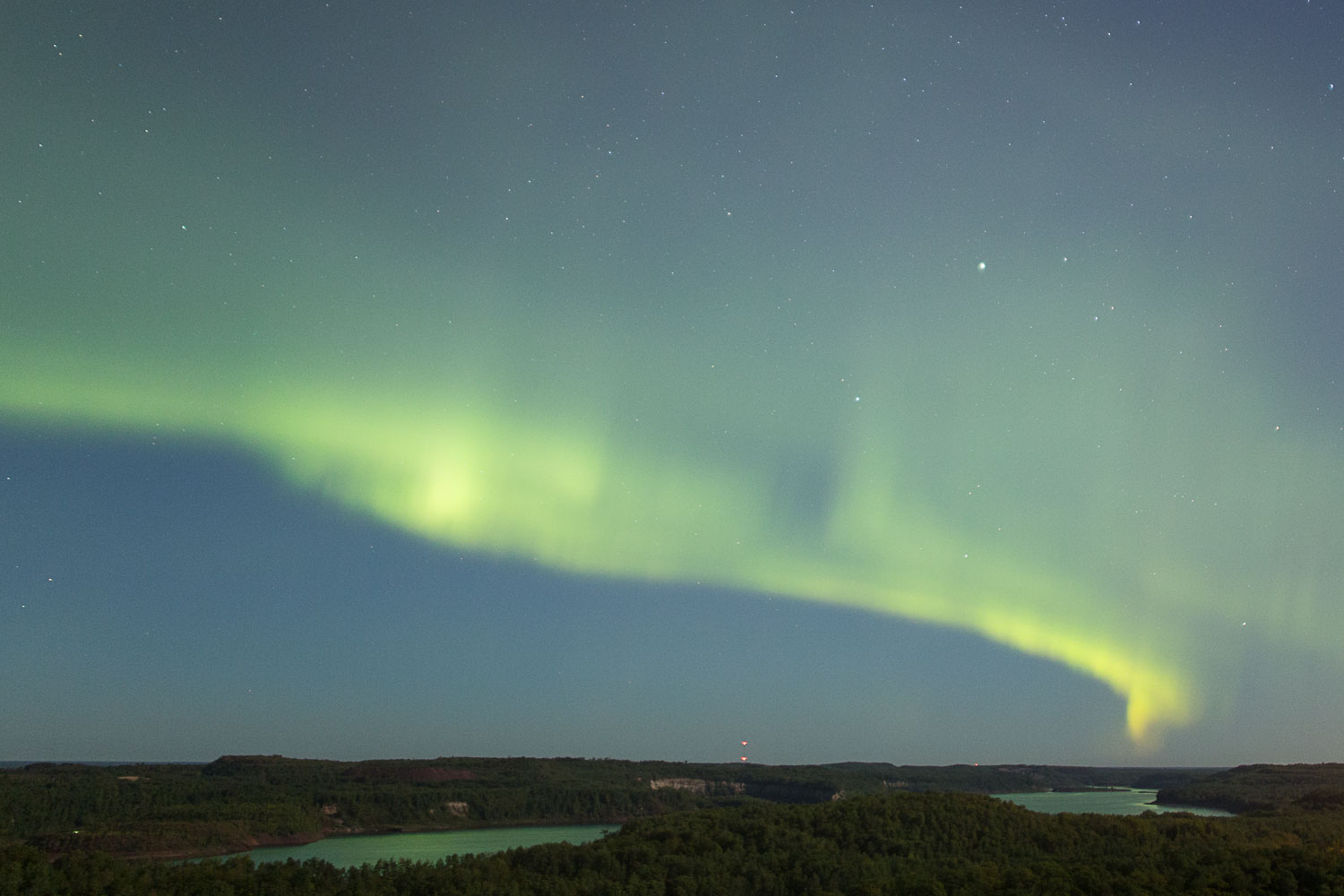 |
| Green reflected from the Canisteo pit. |
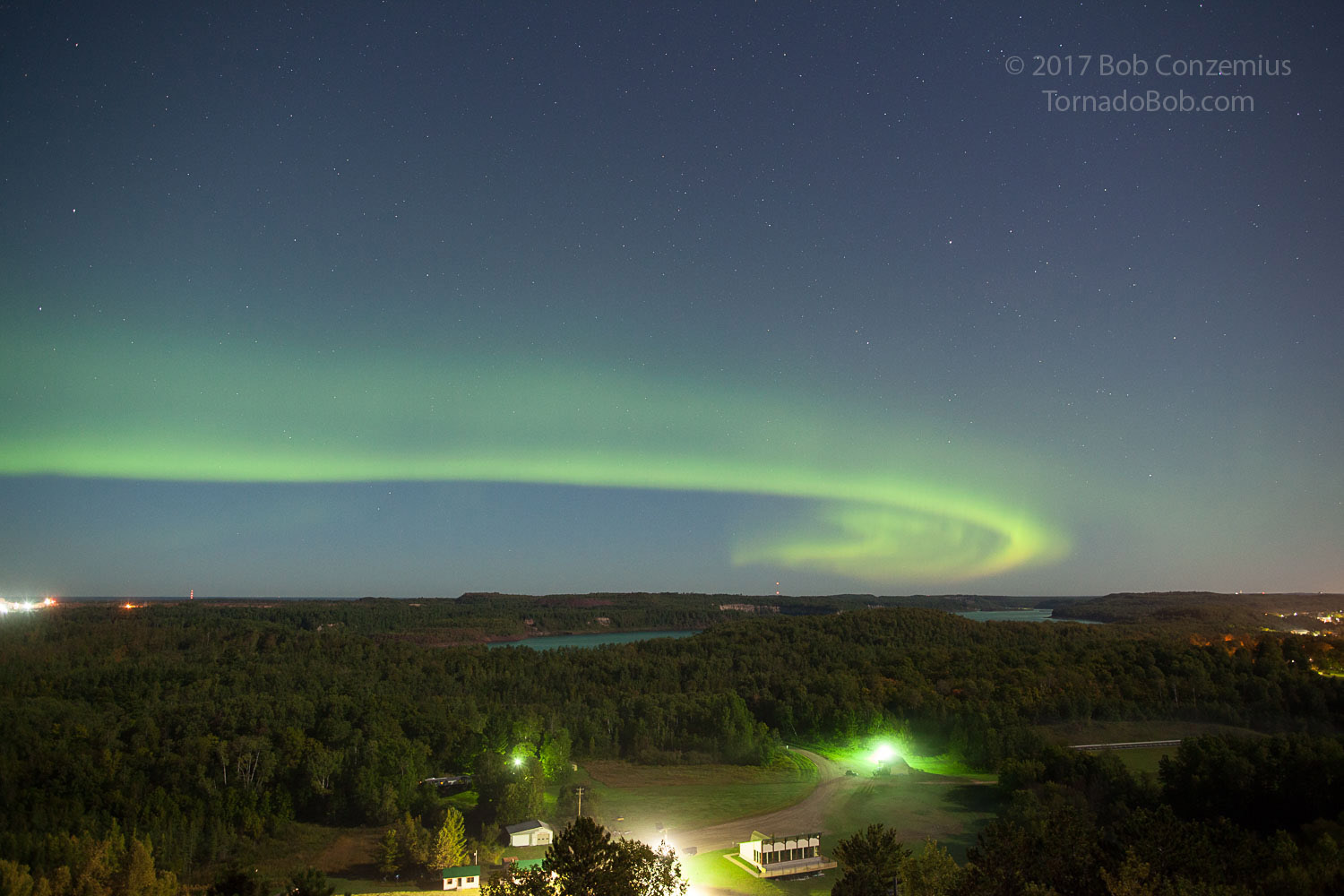 |
| Just a few minutes before midnight. |
Back to Auroras | Home